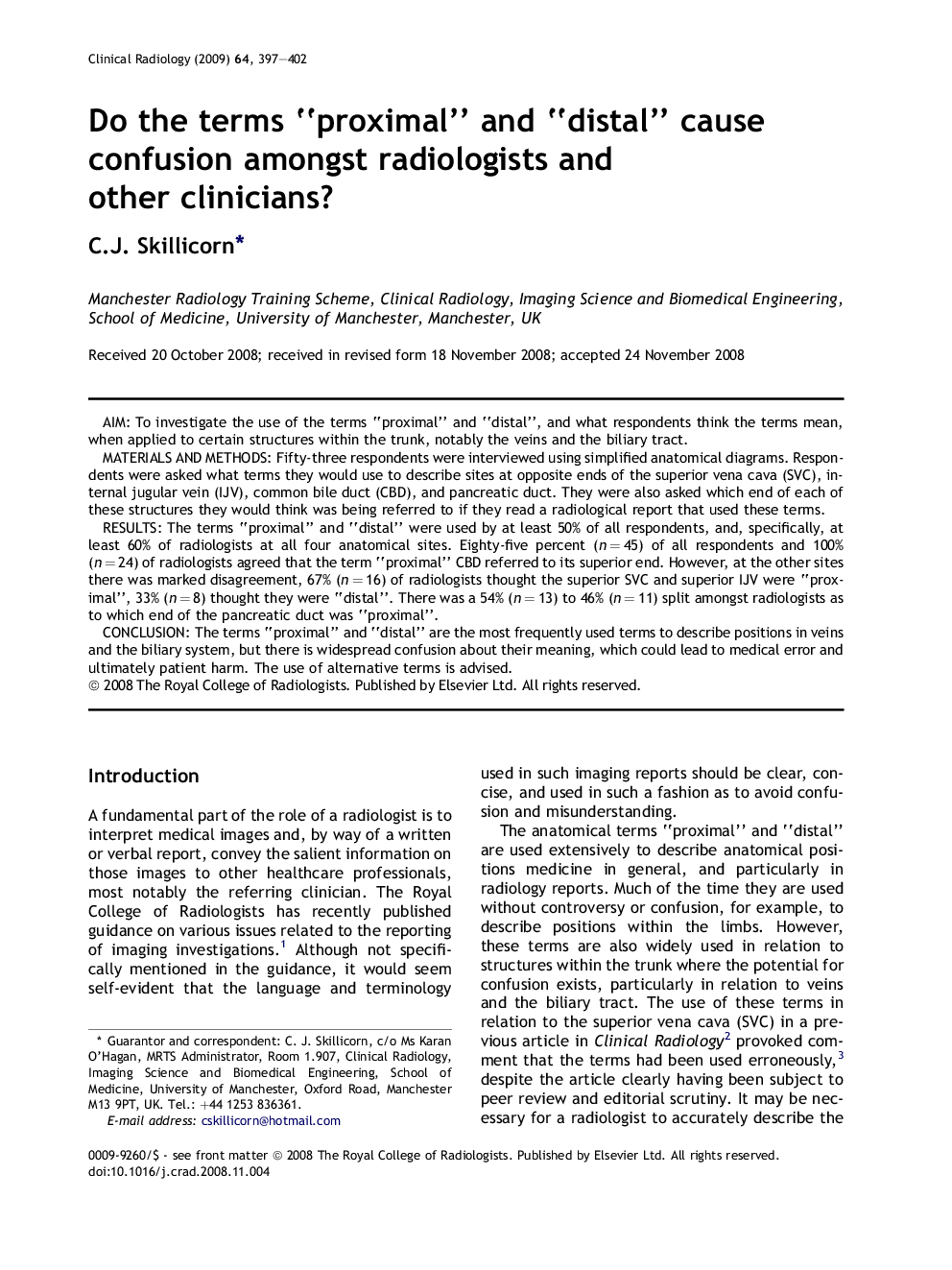| Article ID | Journal | Published Year | Pages | File Type |
|---|---|---|---|---|
| 3983907 | Clinical Radiology | 2009 | 6 Pages |
AimTo investigate the use of the terms “proximal” and “distal”, and what respondents think the terms mean, when applied to certain structures within the trunk, notably the veins and the biliary tract.Materials and MethodsFifty-three respondents were interviewed using simplified anatomical diagrams. Respondents were asked what terms they would use to describe sites at opposite ends of the superior vena cava (SVC), internal jugular vein (IJV), common bile duct (CBD), and pancreatic duct. They were also asked which end of each of these structures they would think was being referred to if they read a radiological report that used these terms.ResultsThe terms “proximal” and “distal” were used by at least 50% of all respondents, and, specifically, at least 60% of radiologists at all four anatomical sites. Eighty-five percent (n = 45) of all respondents and 100% (n = 24) of radiologists agreed that the term “proximal” CBD referred to its superior end. However, at the other sites there was marked disagreement, 67% (n = 16) of radiologists thought the superior SVC and superior IJV were “proximal”, 33% (n = 8) thought they were “distal”. There was a 54% (n = 13) to 46% (n = 11) split amongst radiologists as to which end of the pancreatic duct was “proximal”.ConclusionThe terms “proximal” and “distal” are the most frequently used terms to describe positions in veins and the biliary system, but there is widespread confusion about their meaning, which could lead to medical error and ultimately patient harm. The use of alternative terms is advised.
